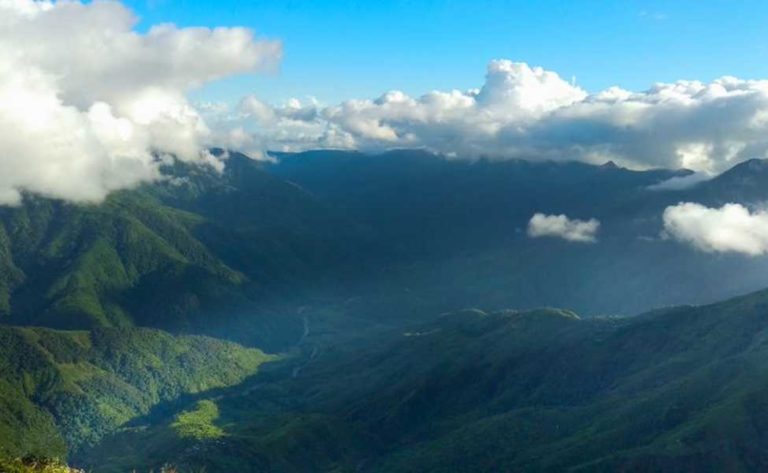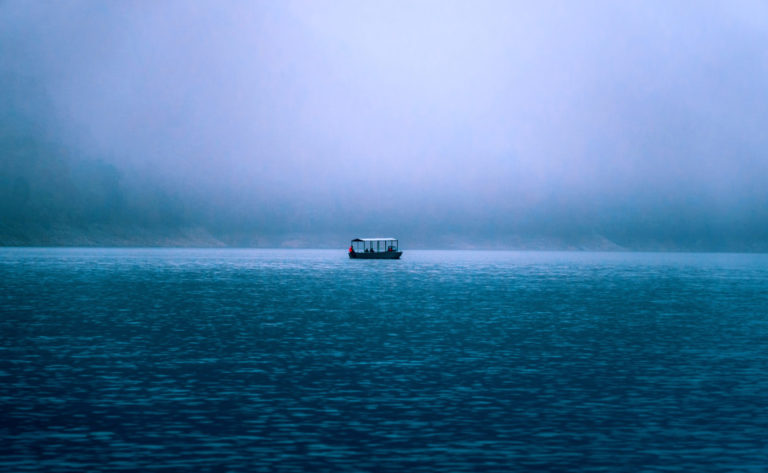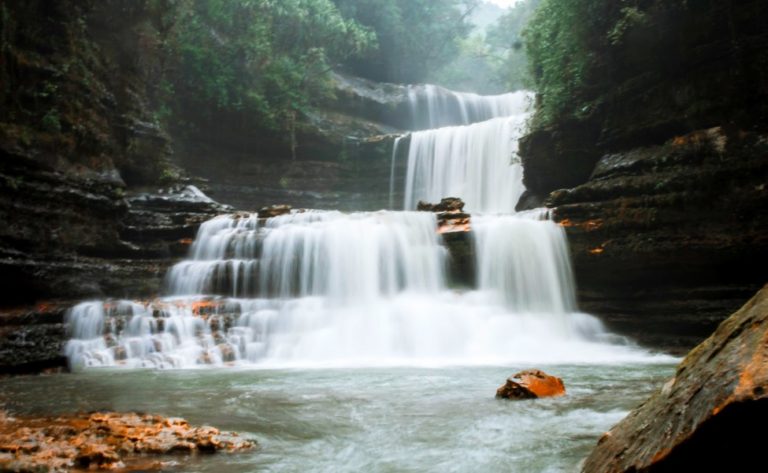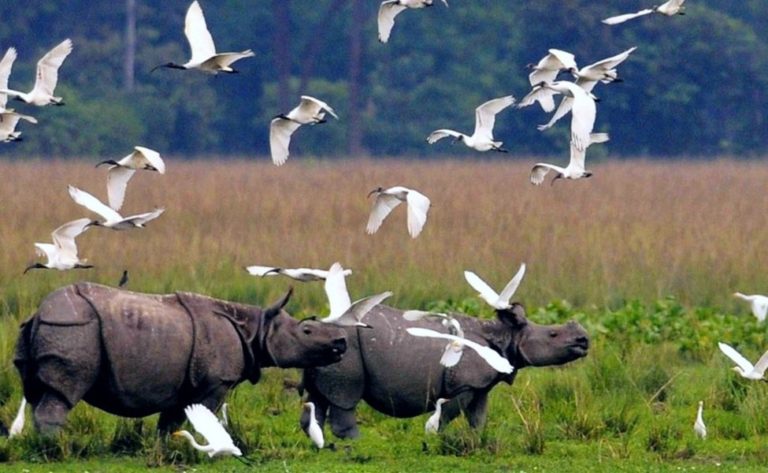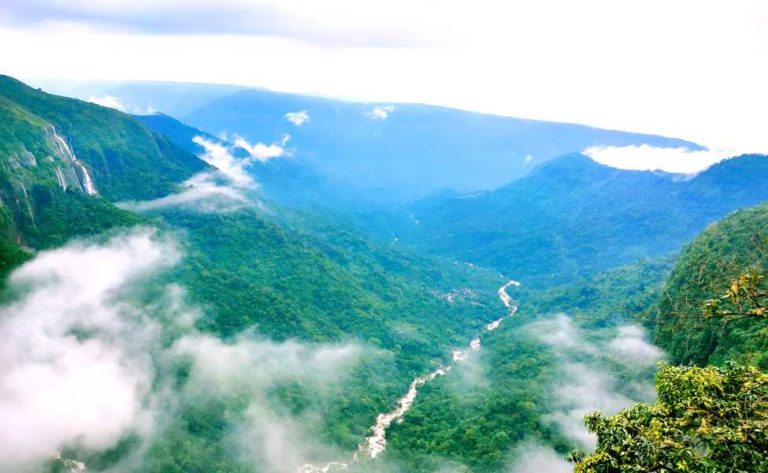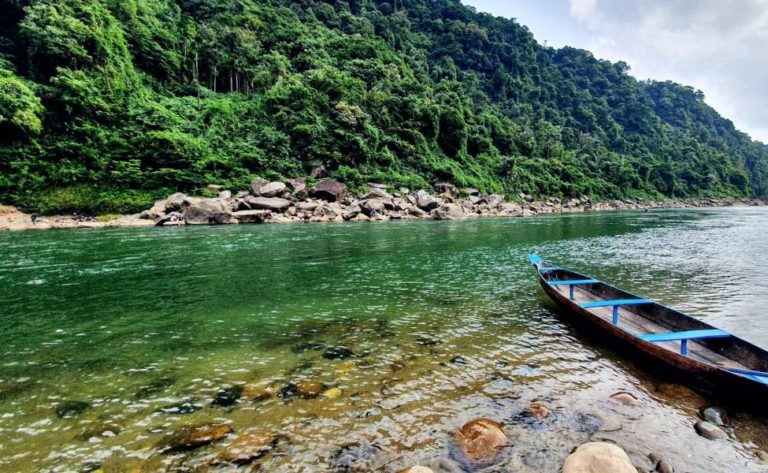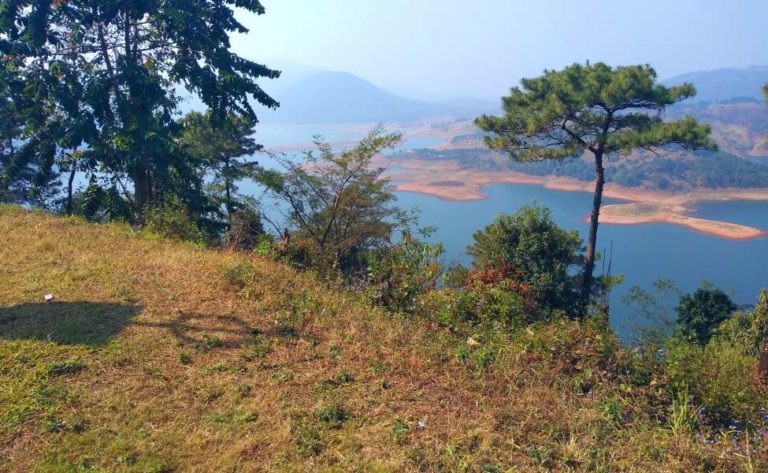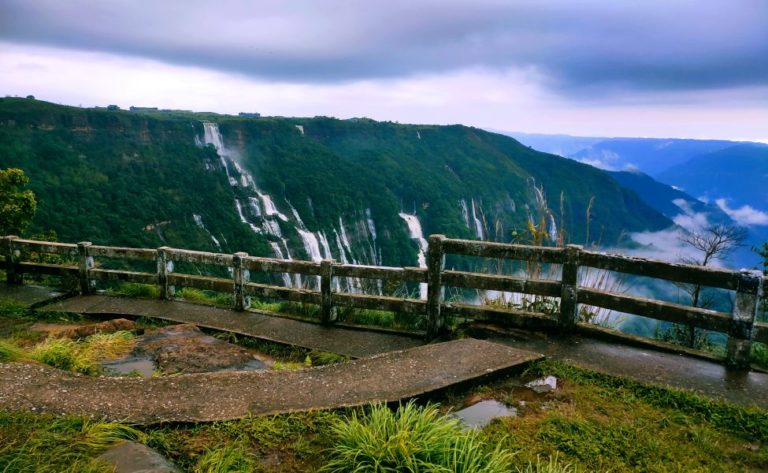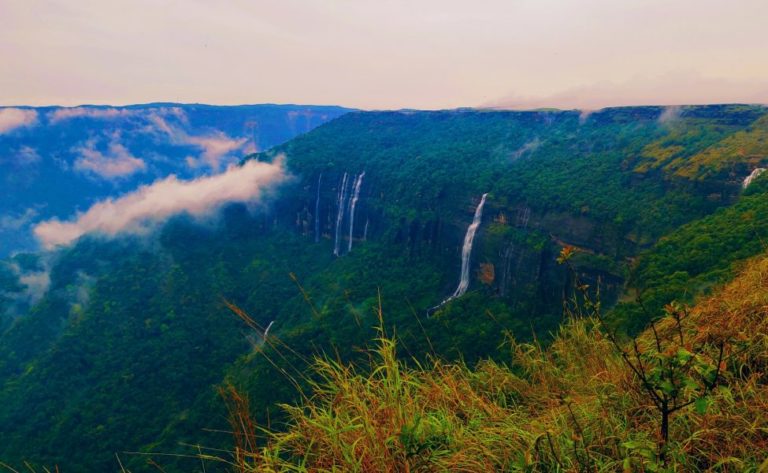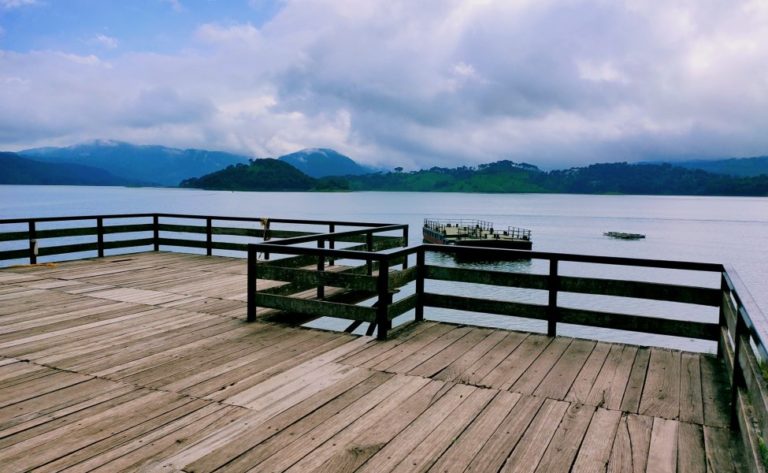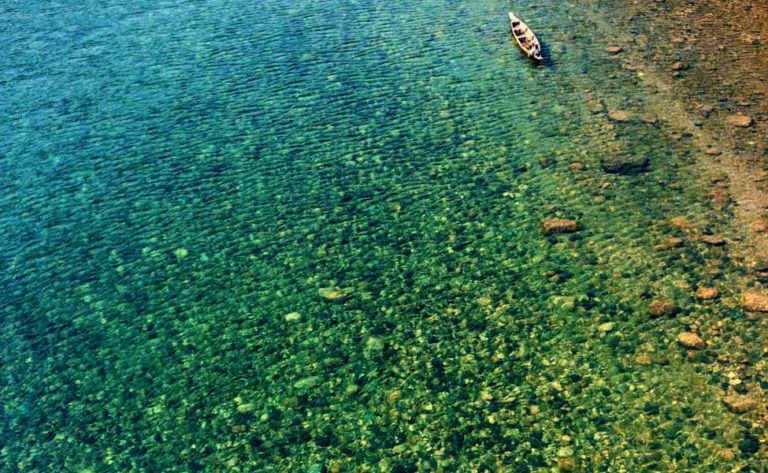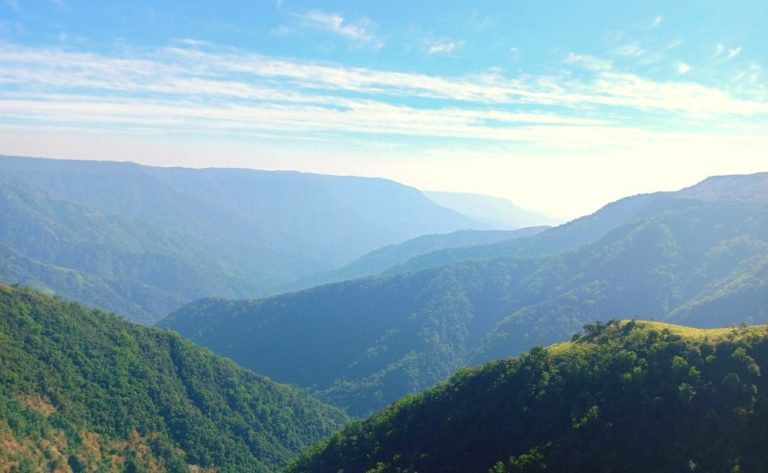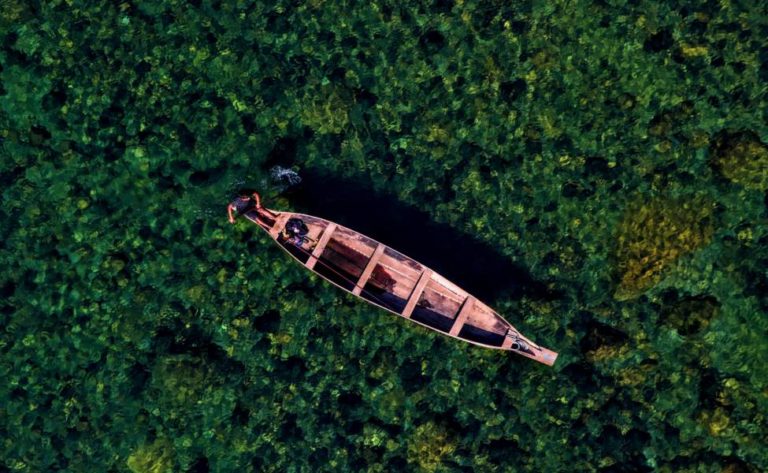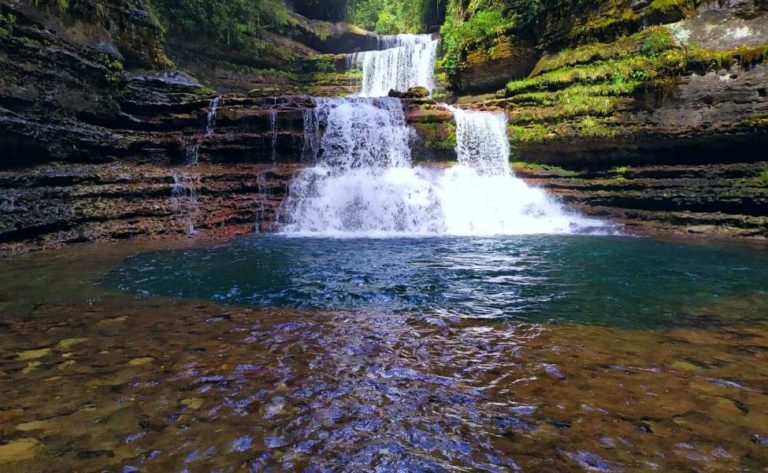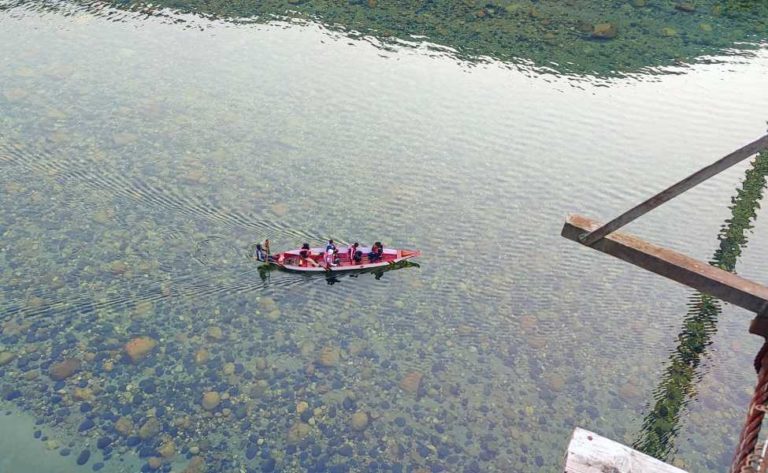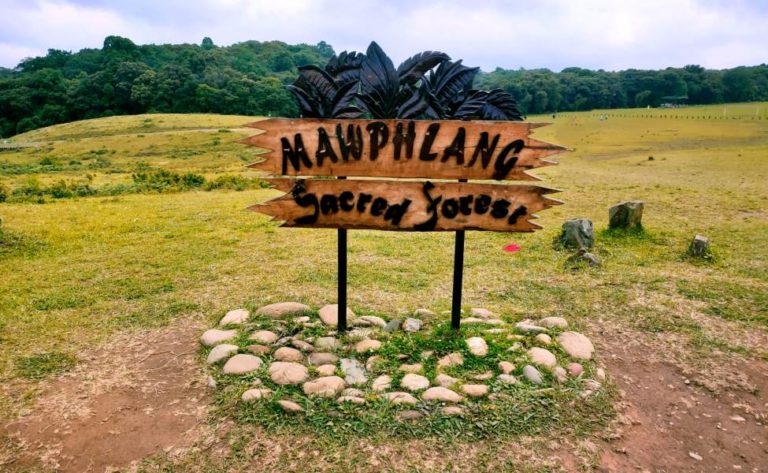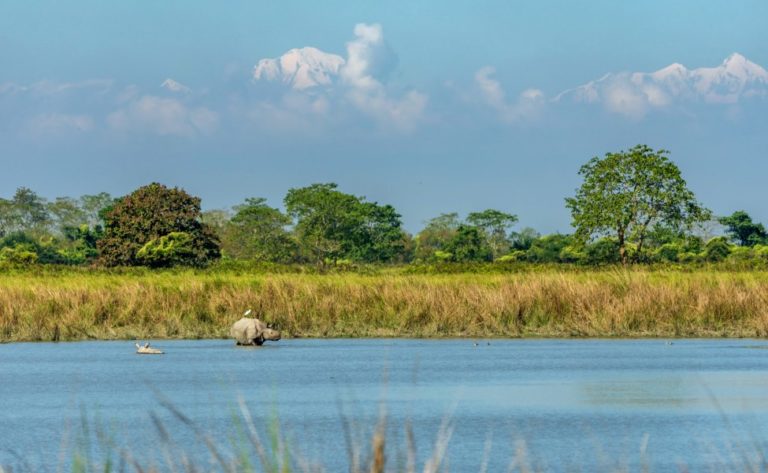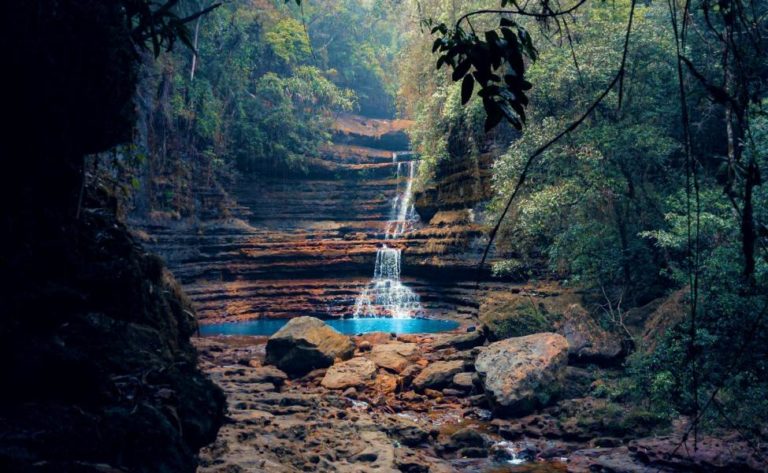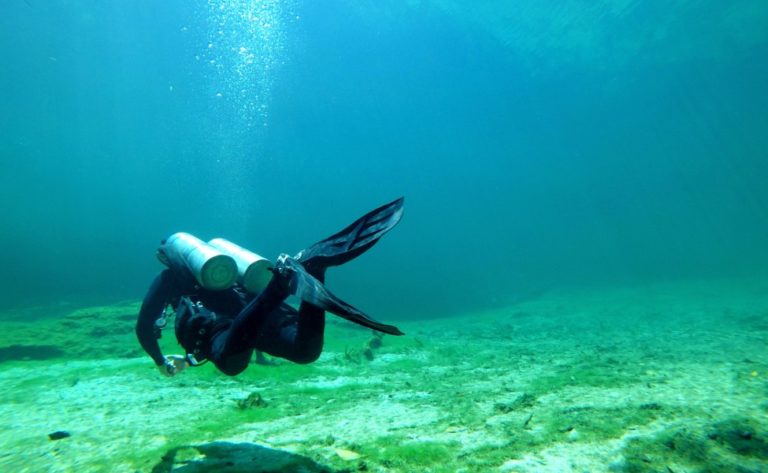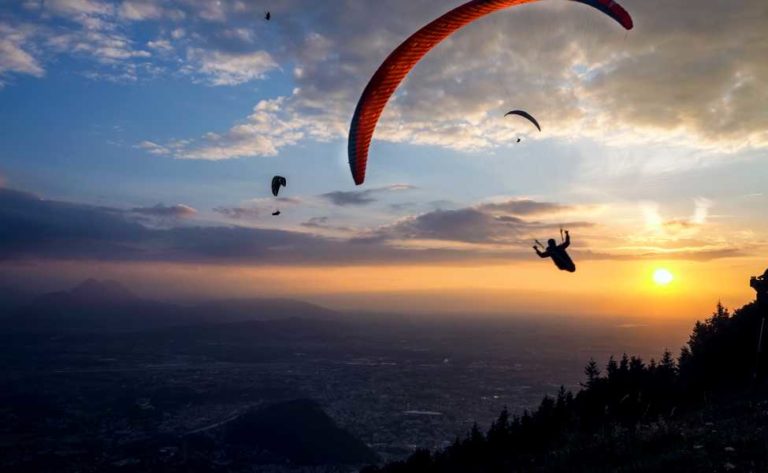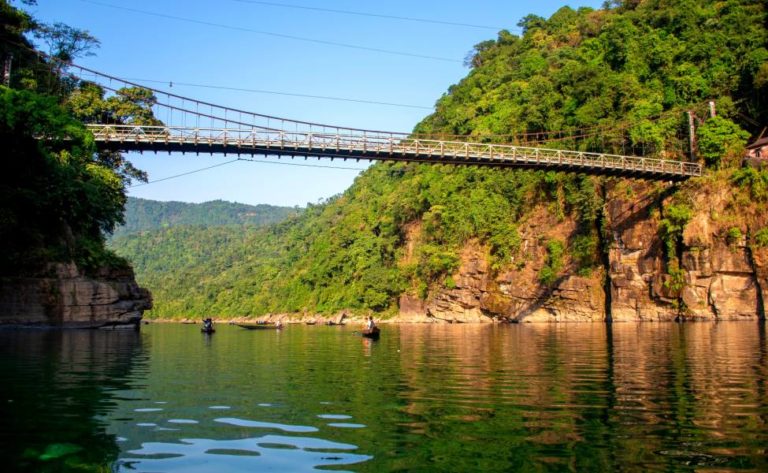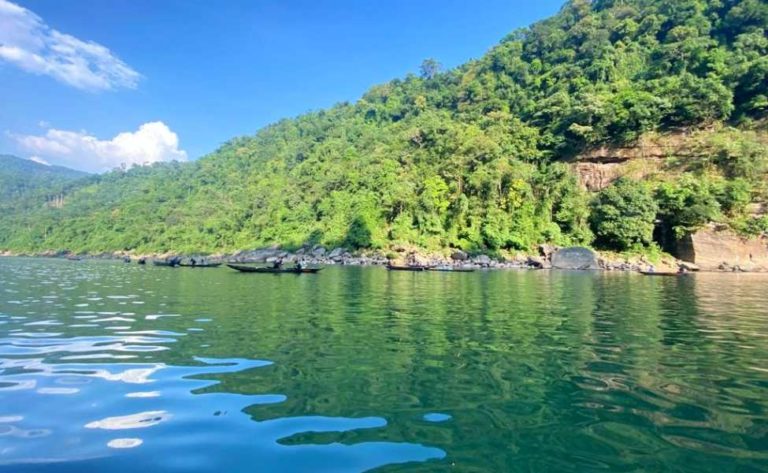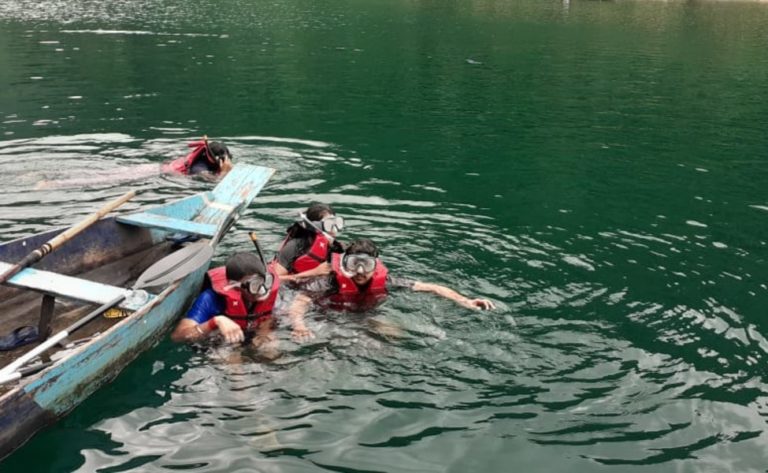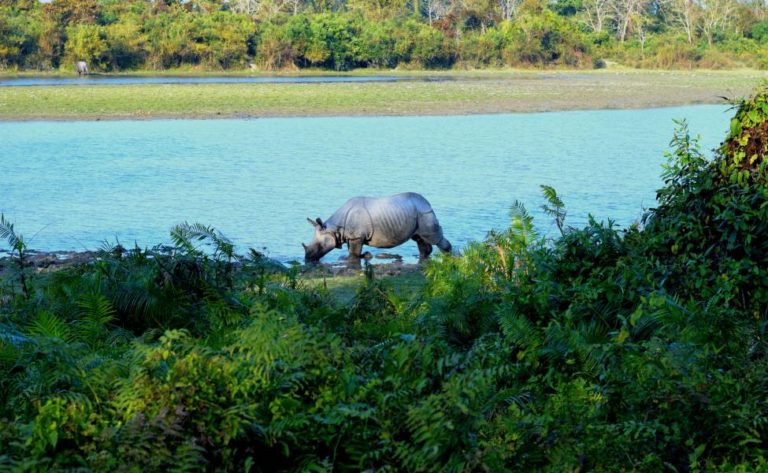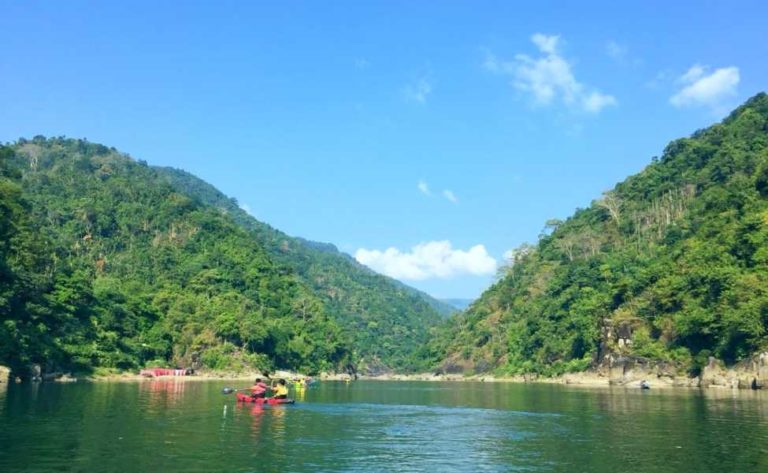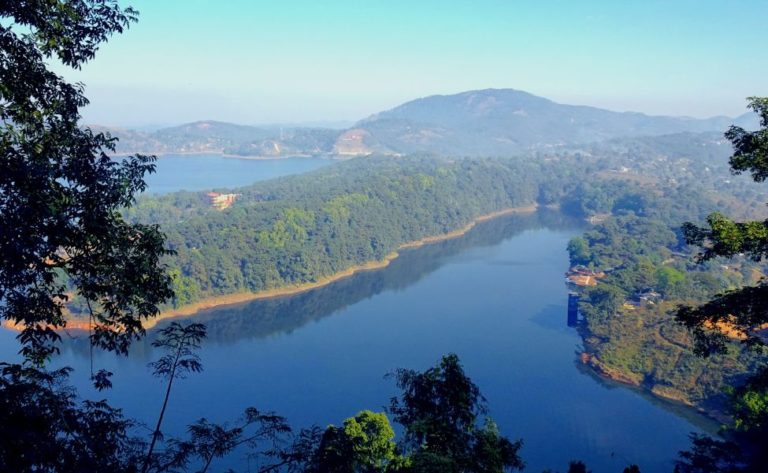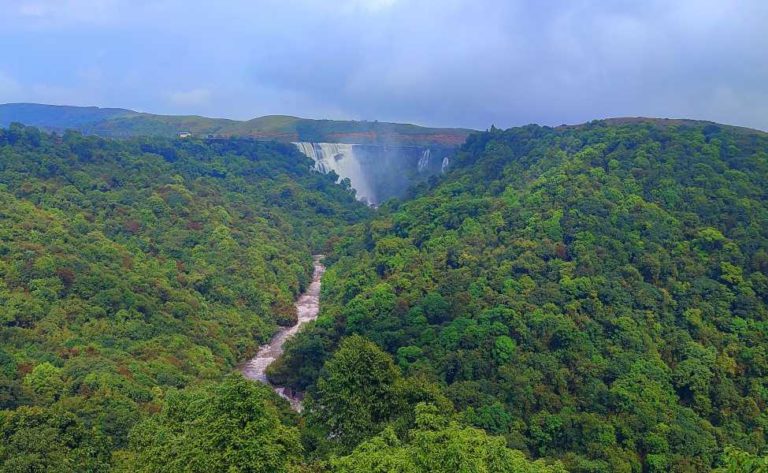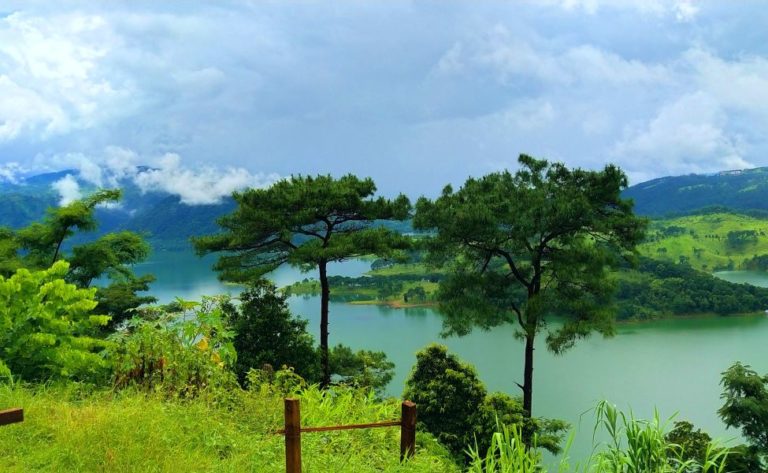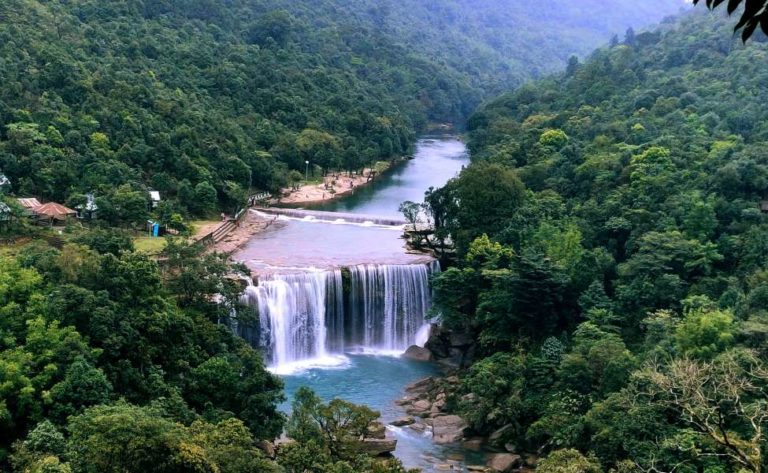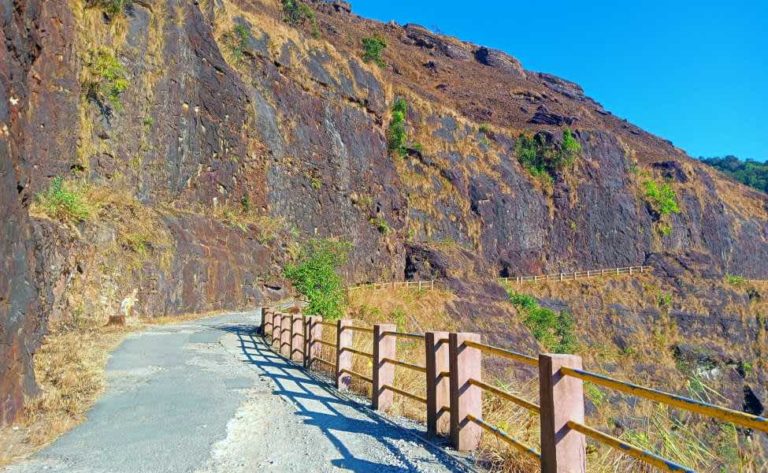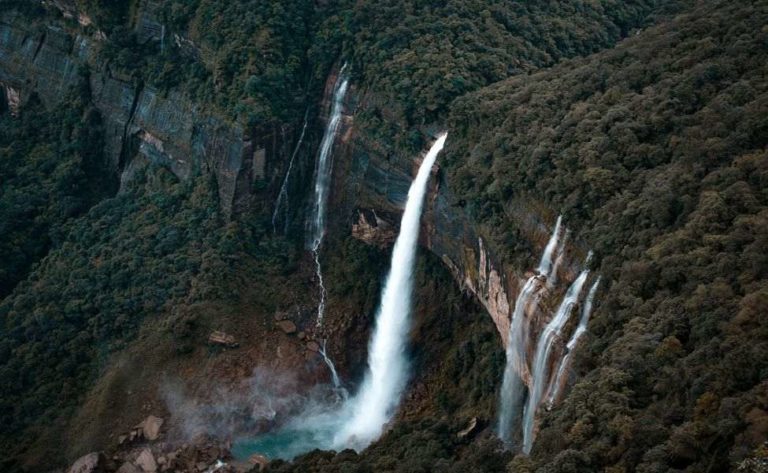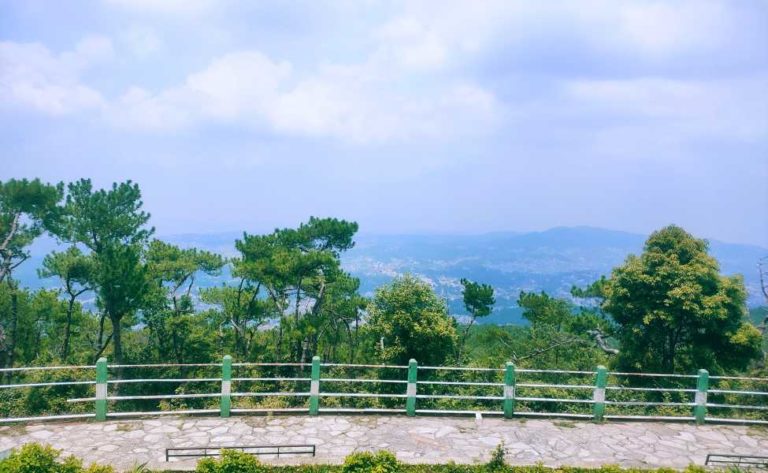
Mawsynram Tourism: A Complete Travel Guide
Mawsynram Tourism: A Complete Travel Guide
The settlement of Mawsynram, known as the wettest location on earth, is a nature lover’s paradise and the greatest place to experience the severity of the rains. Mawsynram, with a very small edge, matches Cherrapunji (11,777mm) concerning annual rainfall which is 11,872mm. 15 kilometres West of Cherrapunji, Mawsynram is 1400 metres above in the East Khasi Hills. According to Meteorologists, the major reason for such massive rainfall in Mawsynram is the location of this beautiful place. There is a buildup of moisture over the Bay of Bengal, which results in precipitation over Mawsynram and a heavy, protracted monsoon season. In the village of Mawsynram, clouds frequently pass past houses, and plants are utilized to muffle the sound of the rain on building roofs. When power, running water, and hard surface roads were introduced in the late 1900s, Mawsynram’s living conditions finally improved. Many of the Mawsynram women weave ‘knups’—which are worn over the head and back and don’t require hands to keep them in place—for the locals. These knups, which resemble turtle shells in appearance but operate like umbrellas, are constructed of braided bamboo, grass, or leaves.
Since Mawsynram experiences heavy rainfall and several moving rivers, living rubber tree roots
to soundproof their shelters from the thundering rain, the residents of Mawsynram employ thick grass. The word “Maw,” which appears in Mawsynram and Khasi meaning “stone,” alludes to some of the megaliths that can be seen in the Khasi Hill region. The town is famously known for its huge formation of a stalagmite that appears to be in the shape of “Shivling.” At a height of 1400 metres, Mawsynram is located. The landscape is compensated for by beautiful waterfalls and emerald-green plains. Drivers have difficulty and need to have exceptional skills when travelling from Shillong to Mawsynram. The terrain can only be handled by SUVs or four-wheel drives.
Utilising one of the living bridges known as jingkieng deingjris, constructed from the roots of rubber plants, is a must-do experience. It is frequently used by locals to cross choppy streams during the monsoon because it is said to take around two decades to grow before it obtains strong support. The long-standing custom of “siat khnam,” which translates to “shoot arrow,” is one of the various hobbies practiced by the people of Mawsynram. Each competitor launches arrows similar to javelins at bamboo targets placed a short distance away as part of this recreational archery-based gambling sport. One such activity is to go fishing in the ponds surrounding the hamlet.
What Makes Mawsynram so Famous?
You will always be met with unforeseen rain at any time of the year in this area, which is blessed with beautiful vegetation and fauna. For every traveler seeking excitement, exploring this area is a unique experience. Undoubtedly, one of the top monsoon destinations that should not be missed is Mawsynram. The garden has a variety of native and exotic plant species on display. The location even has a small aviary with a range of unusual and colorful bird species. The area has developed quickly in recent years because of the seasonal entry of huge tourist groups. Nowadays, tourists may easily find lodging at any of Mawsynram’s hotels.
History, Language, and People of Mawsynram
History
According to the India Meteorological Department, Cherrapunji had the most rain between 1901 and 1940. Mawsynram, received the most rain, with rainfall of 10800.8mm. The word “Maw,” which appears in Mawsynram and in Khasi meaning “stone,” alludes to some of the megaliths that can be seen in the Khasi Hills region. The town is famously known for its huge formation of a stalagmite that appears to be in the shape of “Shivling.”
Language
The primary language of communication in this region of the state is English. Hindi is also occasionally used. Khasi and Garo languages are spoken by tribes. Khasi is related to the Southeast Asian tongues of Khmer, Palaung, Vietnamese, and Mon, as well as the Munda and Nicobarese branches of that language family, which are respectively spoken in east-central India and the Nicobar Islands. The family of Austroasiatic languages includes Khasi.
People
Most of the population includes the Garo, Khasi, and Jaintia Tribe. From one tribe to another, the customs, holidays, and clothing vary. Their clothing serves as a representation of their tribe. Garo tribal members wear a little cloth around their waist. A Jainsen and a blouse are worn by Khasi women. Male and female costumes are different. Festivals like Shad Suk Mynsiem, Nongkrem, Behdienkhlam, Shad Sukra, and Wangala are the ones that tourists should attend. Although there aren’t many options when it comes to eating, you should try Khasi cuisine, which includes hog rice and many other dishes. And you must try the tea with the name “Kwai.”
Top Tourist Attractions in Mawsynram
Famous Lum Symper hill and the Mawjymbuin caves are frequent stops on the way to Mawsynram. It is advised that guests stay at least one night in one of the several villages because they have locally managed lodges and homestays. The monsoon season brings beautiful weather to the area as well as a spectacular view due to the clouds flying over the mountains and the wettest landscapes. This will allow them to enjoy morning bird viewing and hiking on new nature routes. The Mawsynram plateau region’s record-breaking rainfall has garnered considerable notice, but there are a lot more noteworthy vistas here. If you’re willing to take some detours, Mawsynram’s geological treasure will reveal even more surprises to you.
Mawjymbuin Cave
Mawjymbuin, which lies just north of Mawsynram, is one of Meghalaya’s most well-known caves because of its spiritual significance. It is tucked away in a jungle, reached by a staircase that descends two floors to the cave’s enormous entrance. On the first level, there is a small observation platform with wonderful views of the entrance, which is 4-m high but astonishingly 50-m wide. The highlight of the cavern, however, is a striking pair of speleothems in the chamber’s center, including a massive stalagmite that resembles the shivalinga and a spectacular stalactite that hangs directly above it. Hindus regard this stalagmite as holy, and they are frequently seen praying there. A small group of stalactites may be seen a short distance from the Shivalinga formation, and there are some modest stalagmite formations on the right corner of the cave floor.
Lum Symper Peak and Cave
The road winds through a landscape of large meadows set against gently sloping hills north of the Mawjymbuin Cave. The jagged Lum Symper
Peak, which is steeply rising in the background, may be seen a few kilometers further down this route. Locals love to have picnics in the patch of grass at the peak’s base. The peak is reached after an hour-long hike and offers expansive views of the surrounding area. Just a few steps walking off the road, the trail gets interesting. The first part of the walk is rather straightforward: you can either take the rocky, steep trail or the winding staircase to reach the grassy hillock. The obscure Lum Symper Cave is located off of Lum Symper Road, tucked away in a forest. The atmosphere in the cave is like something out of the Tomb Raider video game series. The route to the cave is an adventurous scramble through woods, crisscrossed by streams, including one with a small cascade, and dotted with moss-covered stones and a variety of fern species. The entrance to the large cavern is reached through a stepping-stone pathway. If you go during the rainy season, you’ll discover naturally formed pools of crystal-clear water created by the water that is continuously dripping from the nearby greenery. A deep cavern, strewn with rocks and stones, may be found in Lum Symper Cave.
Kheng Kheng Waterfall
These lovely falls are accessible through a detour from the motorway to Mawsynram and are found nearby. It’s possible that Khreng Khreng is one of the east Khasi hills district’s most accessible waterfalls. Parking for tourist cars is possible a short distance from the falls. To go to the Kheng Kheng Viewpoint from here, take a short stroll down a road that is bordered by towering cliffs. The waterfall, which is a sight to behold, thunderously descends an almost vertical rock wall. The falls are being kept from overflowing onto the road by a concrete wall that has been built. A steep ravine is on the opposite side of the road where the waters from the natural pool fall down the rock. The falls are not marked by any signage along the route. The viewpoint provides expansive views on clear days all the way to the community of Syntein, also known as the “Crafts Village.” The villagers are well known for their skill in producing bamboo and cane handicrafts. go there as soon as possible because the mountain covered in trees takes on a golden hue just before sunset.
Mawlyngbna
Weekend getaways are the perfect times to explore Mawlyngbna’s rural idyll since you can take your time exploring the area’s natural wonders and learning about the local way of life. The village can also be visited from Mawsynram or Shillong in a single day if you are short on time. Mawlyngbna, which is located away from the east Khasi hills district’s busier centers, has a natural appeal all its own thanks to its abundance of vegetation, mountain views, natural springs, and nice, welcoming residents. This area of Meghalaya’s countryside offers breathtaking vistas of jade-green peaks tumbling into the plains of Bangladesh, despite being almost invisible to passing travelers on the southern slopes of the Khasi highlands. Rock climbing, kayaking, bird watching, and trekking through luxuriant forests are just a few of the activities. There are always waterfalls or streams where adventurers can cool themselves. The greatest way to characterize Mawlyngbna is as nature’s playground. The threatened tropical pitcher plant (nepenthes khasiana), also referred to as the tier-rakotor demon-flower in Khasi, is also found in the area. Despite being uncommon in the wild, nature lovers will be pleased to learn that the pitcher plant is readily visible here. Recently, there have been focused attempts to create pitcher plant reserves and gardens to safeguard the species.
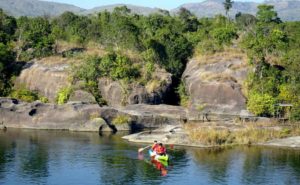
Umkhakoi Lake
A short distance to the west of the settlement is this lovely man-made lake. This lake was created by building a dam on the Umkhakoi River and is surrounded by intriguing rock formations on its northern border. The reservoir is a well-liked picnic location for both locals and tourists because it is bordered by heavily forested hills. Depressions, which are typically filled with water, are scattered across the stony banks. The opposing edges of several of the larger ones are connected by bamboo bridges. A tiny viewing platform provides panoramic views of the surroundings. Beginner kayakers will benefit from the lake’s calm waters. Near the viewing platform, you may rent rowboats or kayaks. Angling enthusiasts are frequently spotted lingering about the banks while they eagerly wait to catch fish. On bright days, you may even see groups of vacationers erecting their supplies along the riverbank to prepare just caught fish. To see some of the best sunset views of the sun’s final reflections on the lake’s glistening surface, come here just before sunset.
Split Rock
This unusual geological feature, which is situated along a desolate stretch on the outskirts of the settlement, is worth a quick stop. The path leading to the rock winds through a tangle of prickly scrub and groups of jackfruit and pineapple trees. The trail must be cautiously navigated because it is covered in large pebbles and boulders. It comes to an end at a little clearing where a massive boulder is visibly broken in half. Locals claim that the 1897 Assam earthquake of magnitude 8 is to blame for the separation. The rock, which is surrounded by a tangle of tropical flora, has a flat top with a clear fracture running through the center.
Krem Puri
The entrance seems innocent at first, but as you descend steeply to get here, the interesting and occasionally dangerous maze eventually emerges. The experience of caving in Krem Puri will push your boundaries and heighten your senses. Make sure to carry with you the appropriate gear, like headlamps and helmets. Never escape from the crowd; always travel with a reliable local guide.
Phlangmawsyrpat
A place cut off from society yet nevertheless deeply steeped in its culture. Meghalaya’s own treasures are revealed by Phlang Mawsyrpat. An old limestone cave with confined entrances that require rock-jumping in the dark. The stalactites and stalagmites, which form from percolating water and take millions of years to produce, hang elegantly inside the cave. Shine a torch to view the effect. An overall exhilarating experience is provided by the natural cave. The location’s mysteries don’t actually end here. Your eyes will be soothed by the nearby viewpoint, which shows the stunning Mawsynram mountains. It is thought that serious travelers will benefit from visiting this interesting area.
Phlangwanbroi
The location code or village code for Phlangwanbroi village is 278672, according to data from the 2011 Census. The village of Phlangwanbroi is situated in Meghalaya, India’s East Khasi Hills district, in the Mawsynram subdivision. It is located 74km from the district headquarters in Shillong and 14km from the sub-district headquarters in Mawsynram (tehsildar office).
There are 939 people living in Phlangwanbroi overall, 437 of them are men, and 502 of whom are women. The literacy rate in the village of Phlangwanbroi is 56.98%, with 56.06% of men and 57.77% of women being literate. Approximately 164 homes make up the community of Phlangwanbroi.
Jakrem Hot Water Spring
Hot springs are what make Jakrem famous. Due to the mildly sulfuric, alkaline water, water accumulates in a pool and becomes heated. You can unwind by taking a plunge in the pool. Toxins in the body can be removed by bathing in the water. During the winter, it is a fantastic location to visit.
Best Time to Visit Mawsynram for Tourism
The monsoon season is the best time to visit Mawsynram since the area is at its most beautiful, with the air remaining pure and fresh, the foliage being bright and green, and the environment is endowed with a sense of tranquillity. Mawsynram can be visited all year round, though, as the climate is generally pleasant and it doesn’t get too hot there very often. The average temperature recorded around January is 10ºC. On the other hand, the temperature during August reaches up to 20ºC. Mawsynram is a site that you simply must see because of its luscious greenery, snow-capped mountain peaks, roaring waterfalls, and vibrant orchids.
How to Reach Mawsynram
Mawsynram has a reputation for being the wettest place in Meghalaya. You must visit it because it is one of India’s unique locations. Find out how to get to Mawsynram via train, road, and air with the information provided here.
By Train
The Assamese city of Guwahati has the closest rail station for travel to any location in Meghalaya. Guwahati Railway Station and Mawsynram are 151 kilometers apart. Traveling by car can take about 4 hours, and 35 minutes. Guwahati and Mawsynram are connected by a number of buses and private automobiles.
By Air
Shillong’s Umroi Airport, which is 87 kilometers away from Mawsynram, is the closest airport. Numerous private cars run often between the Shillong airport and Mawsynram. The scenic road passes through some lovely hillocks and verdant surroundings. To drive from the Shillong airport to Mawsynram, it should take you about 2 hours and 50 minutes. Traveling via Assam, one might opt to reach the Lokpriya Gopinath Bordoloi International Airport (also called the Guwahati airport). From Mawsynram, it is 170 kilometers away. The trip to Mawsynram takes close to five hours from Guwahati airport.
By Road
Assam’s Guwahati and Meghalaya’s Cherrapunji are easily accessible by road from Mawsynram, as are other well-known locations like Shillong. Lovely hills with cloud cover and vast farmlands line the road’s course. The driving time to go to Mawsynram, which is only 60 kilometers from Shillong, is just over 2 hours. The detour at Mawngap on the way to Shillong is necessary if you are traveling to Mawsynram from Cherrapunji. Nearly 2 hours and 40 minutes are needed to travel by car to get to Mawsynram, which is about 81 kilometers from Cherrapunji.
Travel Advice on Mawsynram
The settlement of Mawsynram is home to amazing plants and animals, making it a thriving destination for ecotourism that enchants everyone who visits. Although those who enjoy the rain may find Mawsyram’s monsoon season to be especially alluring, visitors are frequently discouraged from visiting this section of the state during the rainy season due to the region’s almost 10,000 mm yearly rainfall. In order to soundproof their shelters from the thundering rain, the residents of Mawsynram employ thick grass. Dwarksuid, a lovely pool with broad, rocky sides, is one of Mawsynram’s most underappreciated tourist attractions. The distinctive lotus-like shapes of the local rock formations make them distinctive and memorable. Items include an umbrella, a raincoat, a first-aid kit, a trekking kit, winter clothing, waterproof shoes, and insect repellents, as well as all the appropriate identification cards and identity proofs.
Tips for Visiting Mawsynram
- Learn About Local Permits.
- Pay attention to the reservations.
- Bring only the bare basics.
- The itinerary needs to be prepared.
- Make a budget plan that includes your safety as well.
- Try some local cuisine.
- Observe the culture of the area.
Rainfall in Mawsynram
Mawsynram is known as the world’s wettest place and the location with the largest amount of precipitation. Despite being kilometers apart, Mawsynram and Cherrapunji both experience rain. It rains every day, though not all day long but each day. 11,872 mm of rain fell there on a yearly average. The monsoon season is when it rains the most.
Things to do in Mawsynram
Although there are numerous things to do in such a beautiful place like Meghalaya, here are a few things that catch the sight of many visitors and tourists:
Visit to Cherrapunjee
After Mawsynram, Cherrapunji is regarded as the second wettest site on earth. At a height of 1484 m, it is placed in the East Khasi Hills passing over the Bangladeshi plains. In terms of total rainfall in a month and a year, Cherrapunji, which is 17 km outside the city center, continues to hold the record. The vegetation in Cherrapunji’s valley also referred to as Sohra, is abundant and extremely varied. Cherrapunji is home to stunning live root bridges that are hidden deeper behind the dense forest cover. To see the stunning double-decker bridges at Cherrapunji, you might need to walk for up to three hours. Despite the difficulty of the hike, the rivers, the hanging bridges, and the breathtaking scenery make it worthwhile.
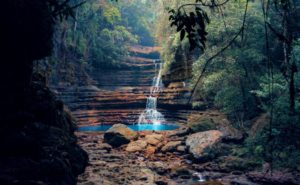
Nohkalikai Falls
Nohkalikai Falls, known to be the tallest dive waterfall in India, is placed about 6.7 kilometers from Cherrapunji and is the sky-high waterfall in the country. These waterfalls are among the things you just must see while you’re in Cherrapunji because they’re considered to be among the most stunning in the nation. The lush cliff of Nohkalikai waterfalls just captures the beauty of nature as it is tucked into the Khasi hills’ rainforests and set against the glorious blue sky.
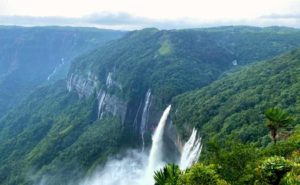
Mawsmai Falls
The fantastic Mawsmai falls, another name for which is the Seven sisters falls, is located about 1 km south of Mawsmai village. These waterfalls, which go by the name Nohsngithiang Falls, are found in the East Khasi Hills at a height of 315 meters above sea level. The Khasi Hills’ limestone cliffs are only breached by the falls during the wet season. The sight of the water reflecting the sun’s rays while being surrounded by evergreen rainforests is certainly reviving. These waterfalls are a must-see when in Mawsynram because of their famed beauty.
Mawlyngbna
Mawlyngbna, a tidy community with a natural geyser and a wealth of fossils, is located about 25 kilometers from Mawsynram. One can easily seek a genuine place to lodge in the village known to be Traveller’s Nest. Due to its location in Meghalaya’s remote interior, where Khasi hills meet the plains of Bangladesh’s neighboring country, Mawlyngbna is also referred to as the “Edge of India.” Even though the village is small, there are many interesting locations to visit.
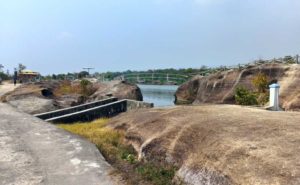
Adventure Activities to do in Mawsynram
Recreational outdoor activities at the Mawsynram tourist location are without a doubt a fantastic way to re-energize your trip. Additionally, it turns out to be significantly more interesting and invigorating in terms of the recreational activities in Mawsynram. The recreational activities in Mawsynram are a culmination of the city’s popular pastimes and diverse experience amusements.
Visit to Mawjymbuin Caves
The primary attraction in Mawsynram, the Mawjymbuin Caves, is situated around 2.5 kilometers from the bus stop. The cave, which is more than 200 meters high and entirely constructed of calcareous sandstones, has numerous stalagmites that were created over the course of many years by the deposition and weathering of calcium carbonate and mineral-rich fluids. The cave has many rift openings and corridors, however, some of them might be challenging to navigate. This massive pillar creation, which is the cave’s main draw and is highly revered by visitors who are devotees, is naturally fashioned into the Shiva Linga structure. The cow-shaped stalagmite that sits just above the Shiva Linga and regularly bathes it in water dripping from the stalagmite adds a unique element to the building. Another noteworthy building in the area is the Symper Rock, which is a flat-topped dome-shaped rock from which visitors may get breathtaking views of the valleys and hills nearby.
Enjoy the Adventure Sports at Mawlyngbna
One of the best sites to visit while exploring the East Khasi Hills district is the picturesque village of Mawlyngbna, which is located about 15 kilometers from Mawsynram. The community, which is perched on a hill, is renowned for its ancient animal fossils that date back millions of years, lovely freshwater natural springs, sizable forest home to an endangered species of pitcher plant, and magnificent waterfalls. For those who like to take it slow, there are also options for swimming, fishing, and boating at an adventure park run by the Mawlyngbna village community. The activities include zip-lining and kayaking for thrill-seekers. The village community regularly hosts events to demonstrate their culture through dance performances and exhibits of their handicrafts and looms at the nearby museum.
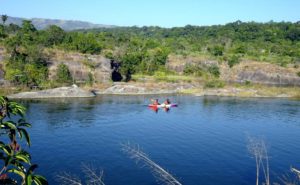
Enjoy the Exotic Views from Khreng Khreng Viewpoint
Approximately 4 kilometers separate Khreng Khreng from Mawkaphan’s bus stop in Mawsynram. It is a viewpoint. The Khreng Khreng viewpoint, which is frequently mentioned as one of the best locations to experience Mawsynram’s beauty, provides visitors with breathtaking views of Syntein village, which is renowned for its expertise in bamboo handicrafts and whose products have attained both national and international level of importance. This location offers stunning views of the Lum Lawpaw hill, the Umngi River, and other nearby communities, particularly in the dark and morning.
Plan a Trip to Cherrapunji
Although Cherrapunji is close by, visiting Mawsynram nearby is also highly recommended when visiting this region of Meghalaya, as Mawsynram’s magnificence is still unmatched in the region. Only 12 miles from the aforementioned settlement, Cherrapunji, one of the wettest locations in the world together with Mawsynram, is situated. Taxis are available for rent for tourists who wish to travel between the two areas, which share a great deal of topographic and vegetative similarities. The Seven Sisters, which are well-known, and the Nohsngithiang waterfall, which is the highest fall in India, are just a couple of the many attractions in this area that are worth visiting.
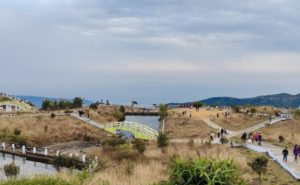
Explore the Mawsmai Cave
Just 6 kilometers ahead of Cherrapunji, in the Mawsmai cave, lies another spectacular cave system. The caves, an outstanding maze of rooms, are luminous and are indeed a sight to behold when the sunlight holds the limestone formations inside and generates an arrangement of beautiful colors and patterns. Due to the cave system’s short length—just 150 meters—exploration and cave diving is quite simple. Numerous animal species that live inside the cave are also present and frequently draw visitors’ attention. When the sparkling sunlight holds the limestone formations inside and generates an arrangement of pretty colors and incredible patterns. Shillong is 53 kilometers away from Cherrapunjee, which is well linked by road. From Shillong’s Bara Bazar to Cherrapunji, numerous public and private buses run. Since Cherrapunjee experiences year-round heavy rainfall, practically any time of the year is a good time to visit. To avoid getting wet, one must come properly equipped for the rain with an umbrella, a raincoat, and boots. Carry a torch in case you want to explore the Mawsmai cave system’s more obscure areas.
Best Places to Stay in Mawsynram
| Name | Location | Prices (Tentative) |
|---|---|---|
| Polo Orchid Resort | Mawsmai Elaka | Starts from INR 15,134/- per night |
| Aisha Guest House | Cherrapunjee | Starts from INR 3,000/- per night |
| Sulawado Resort | Cherrapunjee, Sohra | Starts from INR 4,500/- per night |
| Camp Iaiwan | Cherrapunjee(Near Mawsynram) | Starts from INR 1,080/-per night |
| Delight Homestay | Cherrapunjee(Near Mawsynram) | Starts from INR 2,000/-per night |
| Jms Lodge | Cherrapunjee(Near Mawsynram) | Starts from INR 3,015/-per night |
| Metianil Homestay | Cherrapunjee(Near Mawsynram) | Starts from INR 3,283/-per night |
| The Escapade Inn | Cherrapunjee(Near Mawsynram) | Starts from INR 3,200/-per night |
| Odyssey’s Latara Homestay | Cherrapunjee(Near Mawsynram) | Starts from INR 1,250/-per night |
| Goshen Homestay | Mawsynram | Starts from INR 1,499/- per night. |
Explore our Tour Packages
Weather of Mawsynram
In Mawsynram, the summertime climate is pleasant and mild. Not as hot as other states, it. The temperature is between 14 and 20 °C. It will be challenging to go to these locations during these months due to the excessive rainfall. There is a lot of humidity. Visitors encounter various climatic conditions. It’s not secure. Less rain falls in September and October. This time of year will be freezing. Therefore, travellers must also pack raincoats and warm clothing. It is about 15 degrees outside. The day is not as relaxed.
| Travel Seasons | Min/Max Temperature |
|---|---|
| April to June | 14-20 °C |
| July to September | 12-16°C |
| October to March | 2-15°C |
Frequently Asked Questions on Mawsynram Tourism
In Mawsynram, sightseeing is typically accomplished using cabs and jeeps, which are readily available around the area for ease of movement. Here, cab drivers are well-versed in the area and frequently serve as excellent tour guides for tourists. The main attractions in Mawsynram can be enjoyed while travelling in safety and comfort.
Items include an umbrella, a raincoat, a first-aid kit, a trekking kit, winter clothing, waterproof shoes, and insect repellents, as well as all the appropriate identification cards and identity proofs.
In Mawsynram, it does not pour all day long, but it does.
Mawsynram is well-known for being the wettest location and a location that recorded the maximum rainfall. One of the most well-known tourist destinations in India, it is also well-known for its stunning natural surroundings.
In Mawsynram, there are numerous tourist attractions to see. They include places like the Mawjymbuin caves, Mawlyngbna, and Khreng Khreng viewpoint, among others. Near Mawsynram, other well-known tourist destinations include Shillong and Cherrapunji.
Three sides of Mawsynram are surrounded by hills. As it is situated on the windward side of Garohill, Mawsynram receives orographic rains.
The state of Meghalaya is indeed now open to tourists following the outbreak. The Meghalaya Tourism App’s e-invite generator is however required. A negative RT PCR report may be required if you are not fully immunised.
Although there are no specific commercial areas in Cherrapunji, orange flowers must be brought. Additionally, bamboo and cane crafts are well known here. These artefacts, as well as furniture, are frequently sold at stalls in this area.
Only in Mawsynram can you find the sweet potato known as phanmluh. A fruit called Sohliang, which resembles Sophlang, is also well-known.
A journey to Mawsynram should last at least 5 days and cost no more than between 12,000-14,000 per person. It will cover lodging, transportation, and sightseeing.
It is true that Meghalaya Tourism requires an e-invite. The tourist attractions have been opened by the Meghalayan government. In order to enter Meghalaya, visitors must first get an e-invite. The Meghalaya Tourism App has this e-invitation available. Play Store is the place one can see this application at.
Definitely yes, Mawsynram is a favourite destination for rain- and nature-lovers due to its colourful farms, gorgeous waterfalls, and foggy natural treasures.
Following are some facts about Mawsynram:
Soundproof huts for thunderous downpours
Stalactites That Look Like “Shivlings”
Villagers Prepare for the Rains for Months
The heavy rains in the region sometimes create blockages and this perhaps is problematic for the residents as well as the tourists. This is one major problem that is faced in Mawsynram.
Every winter, the residents of Mawsynram spend months getting ready for the upcoming wet season, anticipating incessant rain and days without sunshine. Their damaged roofs are being repaired. They gather and cut firewood for cooking and lighting.
They are not the same, no. Cherrapunji is the wettest place right now. These two locations, which share a common orography and face distinct valleys, are miles apart.

